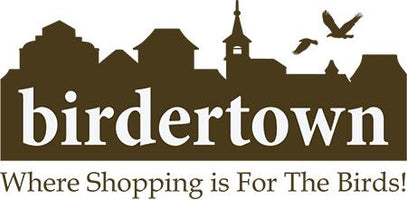
Top 10 Hummingbird Feeding Facts
Hummingbirds are some of the most interesting of all bird species to watch. They can be incredibly lively when feeding on hummingbird nectar, providing an excellent opportunity to see this tiny bird up close. In a salute to these wonderful creatures, let’s take a look at some hummingbird feeding facts that you may not know.
1 - They eat a lot!
When you think about how hummingbirds zip around, quickly flapping their wings, you can probably assume that they need a lot of energy. This is certainly true, which contributes to their diet. They will typically consume half their body weight in sugar each day! This is what sustains their ability to zip around.
2 - They also eat quite frequently!
My favorite feeder is a Big Gulp hummingbird feeder that hangs outside my kitchen window. I once started thinking how interesting it is that there is almost always one or two birds consuming hummingbird nectar. As it turns out, this is because they eat often. In fact, these winged creatures will dine up to eight times an hour, typically sipping for up to a minute each time they feed.
3 - Contrary to popular belief, they don’t slurp nectar
If you thought that these birds slurped hummingbird nectar through their long bills, you can be forgiven. This is a common misconception. However, they actually have a specially designed fringed tongue that they use to dine on the sugary nectar. They can lick up to 15 times each second while feeding, a truly amazing feat!
4 - They are incredibly efficient!
Hummingbirds are absolutely amazing when it comes to converting their food into energy. They are able to convert roughly 97% of the sugar they consume into fuel. To put this into perspective, the typical human will convert roughly 25% of their food into fuel. In other words, hummingbirds are incredibly efficient animals.
5 - They often compete over food
If you’ve ever been watching hummingbirds, you’ve surely seen them chasing others around the hummingbird feeder. While it may seem like they are playing, they are actually in competition for food. They are a bit antisocial and can even be quite mean to one another when it comes to food. This behavior is what generates the rapid “chases” that you’ll see.
6 - They don’t have a stomach!
Believe it or not, this bird does not have a stomach. Naturally, your next question is likely what they do with their food? As it turns out, once hummingbird nectar is consumed, the bird stores it in a tiny sac-like structure in their throat. It will stay here until it goes to the small intestine.
7 - They will eat more than just sugar
Sugar is by far the favorite food of these tiny little birds. They will search for sugar in the nectar of flowers and even in tree sap. However, they are quite opportunistic in nature and will expand their diet when food is scarce. There are species that have been known to dine on insects and even pollen. However, the best hummingbird food is still hummingbird nectar as it is what they prefer.
8 - They can slow their metabolism
How would you like to be able to speed up or slow down your metabolism on command? It would be the perfect dieting trick. Well, hummingbirds can do just that. When food is fairly scarce, these little guys will slow down their metabolism in order to make food last longer, something that has helped them survive for millions of years.
9 - They can’t smell at all
Hummingbirds have no sense of smell. How does this relate to feeding habits? Many people think that they find food based on smell; however, this is not the case at all. In fact, food is generally found by sight. This is one of the reasons why most hummingbird feeders are red in color. It allows the birds to easily find the food in your hummingbird feeder.
10 - They sometimes sleep upside down
Ok, so this isn’t a feeding fact, but we honestly couldn’t leave it out. This is perhaps the most adorable thing about hummingbirds. They go into a very deep sleep known as a torpor where they slow their breathing and heartbeat, allowing them to survive cold nights. Often, they do this upside down. If you see a hummingbird hanging upside down, do not disturb it.
Would you like to attract more of these amazing little creatures to your backyard? Start shopping your favorites today!